The command post of a Maginot Fort was a hive of activity during combat. Being located 30 metres below ground, gthere was no opportunity to observe first-hand the field of combat. To best understand how a command post worked, we shall begin outside the fort with the observation bunkers, which were the eyes and ears of the Maginot Line. Immediately after each defensive block had been constructed, every work would precisely plan out its target ranges. Everything in the field of visible (and non-visible) range was recorded. This information allowed for pin-point targeting of anything that came into range.
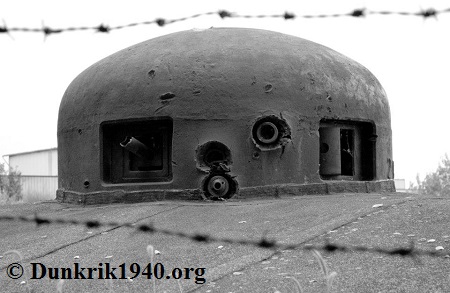
Type 'A' GFM Cloche.
A panoramic image was placed at the point of observation which could be used for reference; on this every observable feature was marked out, complete with distances so that he target information could be accurately relayed to the command post of the fortress. The forts themselves were not entirely 'blind'; most combat blocks were fitted with cloches - non- retractable armoured positions. The cloches were produced in different types according to the function they were to perform. Of the different types the GFM (Guetteur et Fusil-Mitrailleur / Watch and Machine Gun) were by far the most numerous types fitted. There was also the VDP cloche (Vision Directe et Périscopique / Direct and periscope vision) which were solely for observation and targeting. Again, the same system of precise information gathering was used. Thus the targeting information could be easily conveyed over the telephone to the command post.

Second room of a Command Post Complex.
The command post consisted of two rooms; the first was where the information entered the command complex. Each incoming telephone line had a dedicated operator, who was also able to view the same panoramic image available to the observer. This information was then passed to an officer, who in turn passed it to the second room. The second chamber of the command post is where the information was collated and planned on a large map table. From here a set of fire control tables were used to convert the events on the ground into fire co-ordinates, relayed via telephone to the combat block dealing with the attack.

Type 'A' GFM Cloche.
A panoramic image was placed at the point of observation which could be used for reference; on this every observable feature was marked out, complete with distances so that he target information could be accurately relayed to the command post of the fortress. The forts themselves were not entirely 'blind'; most combat blocks were fitted with cloches - non- retractable armoured positions. The cloches were produced in different types according to the function they were to perform. Of the different types the GFM (Guetteur et Fusil-Mitrailleur / Watch and Machine Gun) were by far the most numerous types fitted. There was also the VDP cloche (Vision Directe et Périscopique / Direct and periscope vision) which were solely for observation and targeting. Again, the same system of precise information gathering was used. Thus the targeting information could be easily conveyed over the telephone to the command post.

Second room of a Command Post Complex.
The command post consisted of two rooms; the first was where the information entered the command complex. Each incoming telephone line had a dedicated operator, who was also able to view the same panoramic image available to the observer. This information was then passed to an officer, who in turn passed it to the second room. The second chamber of the command post is where the information was collated and planned on a large map table. From here a set of fire control tables were used to convert the events on the ground into fire co-ordinates, relayed via telephone to the combat block dealing with the attack.
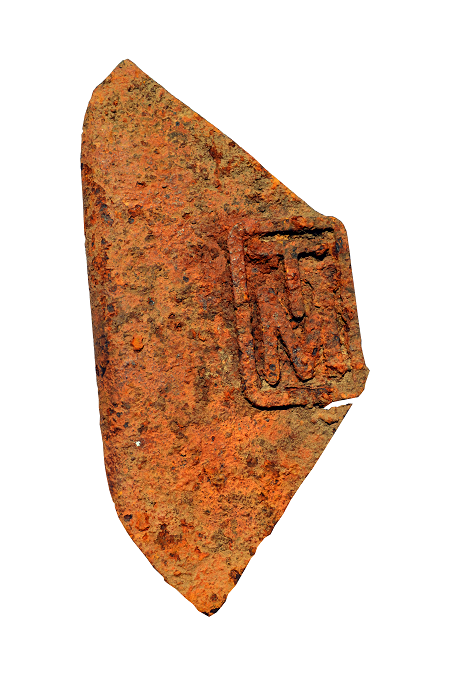
Telephone box cover. This was removed from the Gros Ouvrage Schoenenbourg in the 1950's when the fort was repaired following WW2.
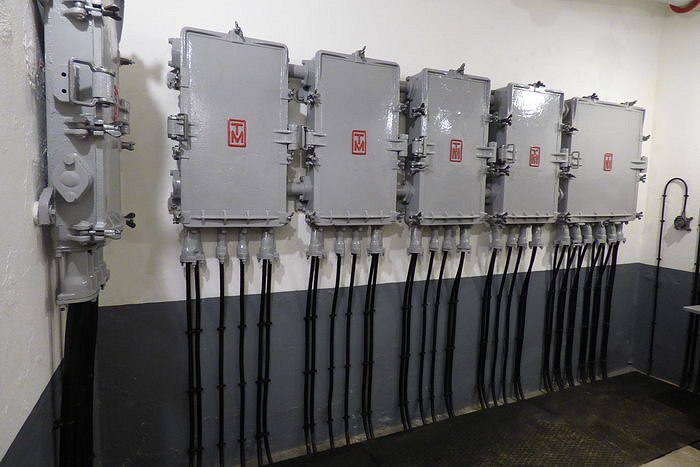
Central Telephone Room, note the box covers.
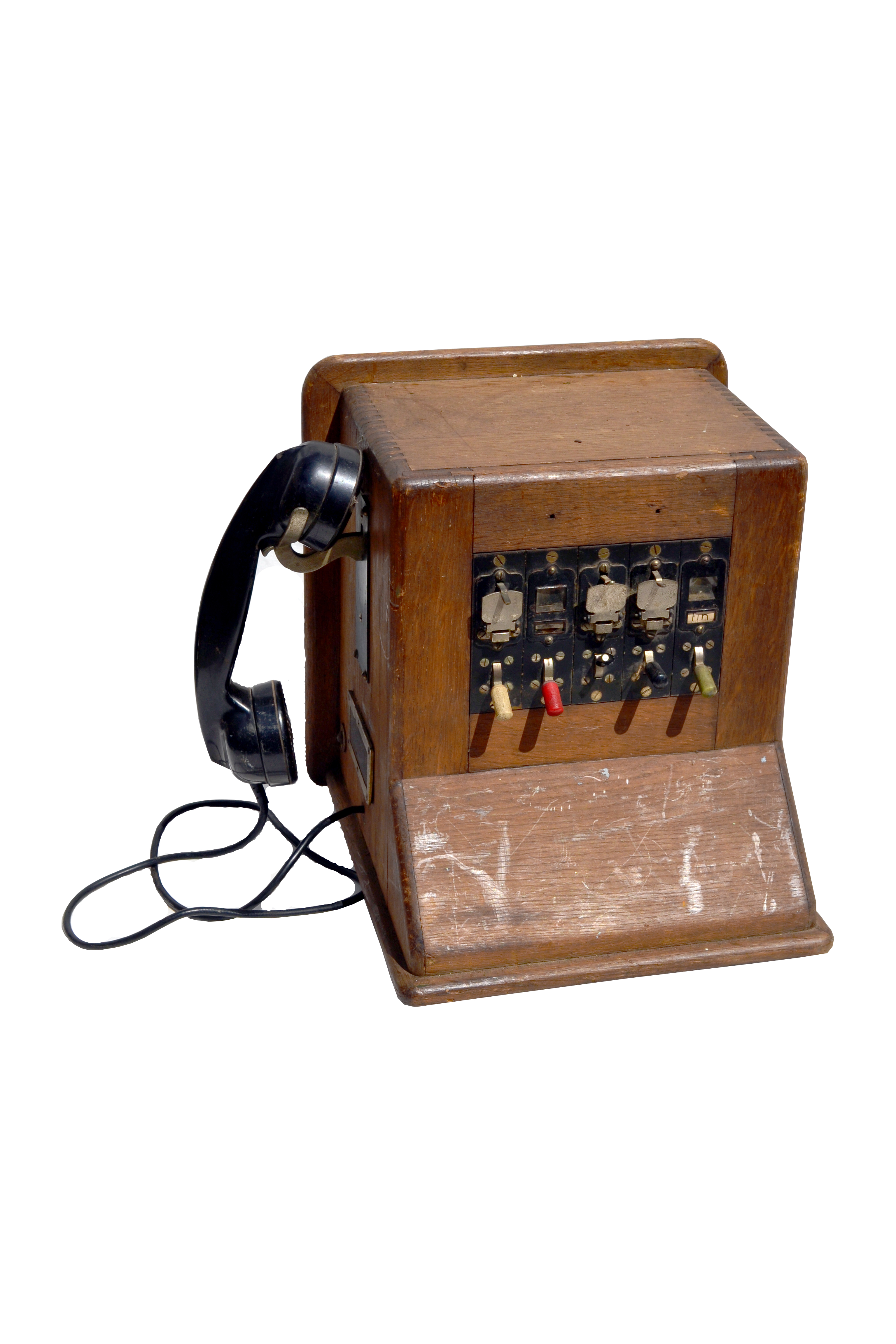
French telephone of the type used in the smaller bunkers of the Maginot Line.

Original Wooden Folding Desk. These can be folded flat against the wall when not in use.
 Telephone Socket. These were placed around the site for anywhere that required the use of a telephone.
Telephone Socket. These were placed around the site for anywhere that required the use of a telephone.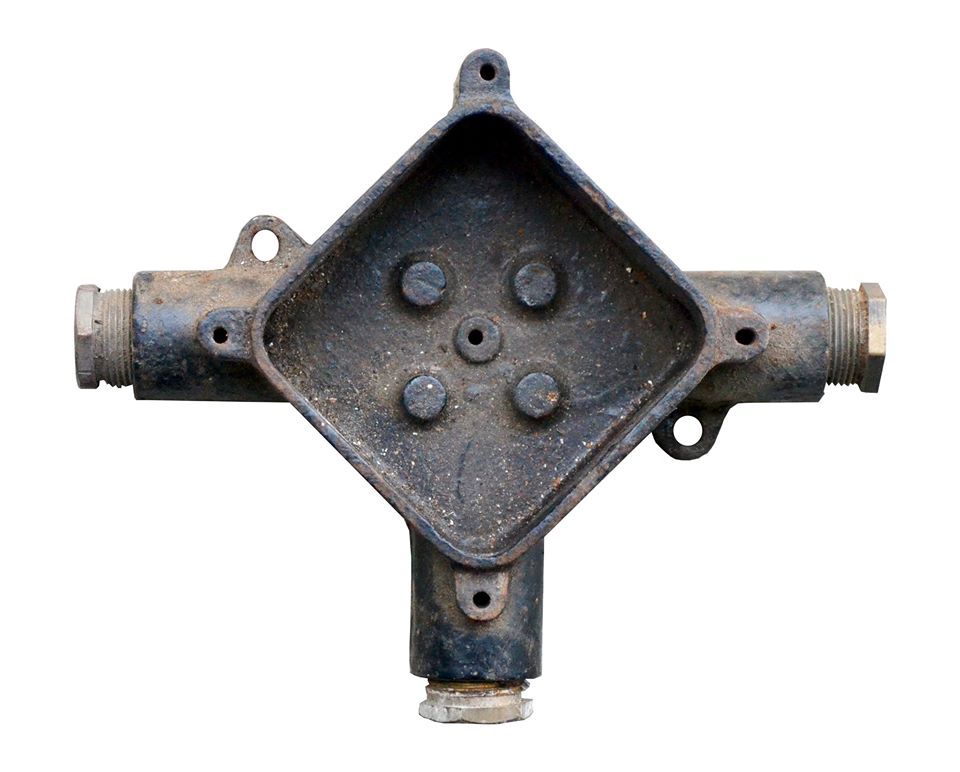 Cable Three-Way junction Box. Used for a variety of smaller cables around the site including the telephone cables. The cables themselves are attached directly to the wall and only where connections were required was any kind of conduit used.
Cable Three-Way junction Box. Used for a variety of smaller cables around the site including the telephone cables. The cables themselves are attached directly to the wall and only where connections were required was any kind of conduit used.
French TM32 Field Telephone. Although produced for communication in the field, these were also used inside the forts as well. In the event of the power bring cut, they enabled the command post to continue functioning.
